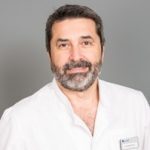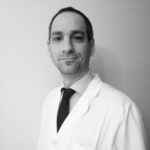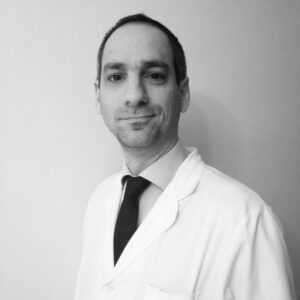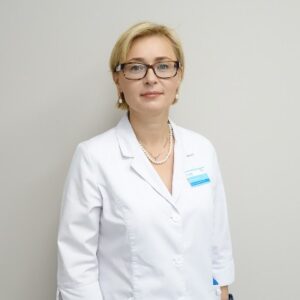Answer from: Raúl Olivares, MD
Barcelona IVF

When we talk about natural IVF, patients tend to think that these are completely natural cycles, so in cases in which we do not give any single injections, hormones and the patients proceed with the natural cycle, and they only take the injection that is going to trigger the ovulation and proceed with the egg collection. In most cases, this is not like that, the groups who usually perform natural IVF use very low doses of hormones for a few days just to make the follicle grow in the right conditions. The protocol is not going to be like a normal IVF, but the idea is that they start with the natural cycle, and then on day 4-5, there are a few injections given of either FSH or hMG to help to boost the follicle growth, and then they stop it.
The follicle continues to grow, and when the follicle reaches between 18-20 millimetres, they take the last injection, the hCG, and they proceed with the egg collection, which is usually done without any sedation, any anaesthesia because you only have to go for one follicle, so that’s something that the patients usually can handle very well, without needing to be on surgery, in an operation room.
Don’t think that the natural cycle means no hormones at all. You are usually going to take a very low dose for a few days, but that’s it, and of course, the last injection to trigger the ovulation.
Answer from: Patricio Calamera, MD, MSc, ObGyn

Well, natural IVF cycles actually work the same way as the normal ones because it depends on the quality of the oocyte. If we get a good quality oocyte, we may get a good healthy embryo and our chances of getting pregnant will be good or standard but we always have to take in consideration that we are doing natural cycles or mini IVF it’s it’s mostly because patients have low ovarian reserve so the quality of the eggs may not be the best.
Answer from: Tomas Frgala, PhD
Unica Clinics – Prague and Brno

There are many possible variations to the IVF stimulations or IVF cycles. Well, in the truly natural cycle, we just monitor the progress via ultrasound, via blood tests for estrogen then, eventually, progesterone trying to actually follow the follicular genesis (the growth of the dominant follicle). If there’s a regular menstruation cycle and signs of ovulation in the patient then we can count on actually the growth of the dominant follicle at the right time, at the right size of the follicle. We would then trigger the maturation of the egg that should be in that follicle and approximately 36 hours later via the oocyte pickup, via a puncture of that follicle, we try to obtain the egg. It’s then examined in the lab if the egg is ripe and healthy it can be fertilized with the sperm cell and then the embryo inserted in the uterine cavity. In a cycle like this, the important or the interesting, the attractive part for the patient is that all the hormones and their workings are quite natural -there are no additional hormones (maybe except for that one trigger shot, that trigger injection). Sometimes there’s a luteal support after the oocyte pickup. Also progesterone is applied but these are various modifications of the protocol. The downside of course is having just one egg so if that egg is not ripe, not healthy or the embryo doesn’t develop perfectly then, we need to repeat the cycle over and over and over again and it can be quite a lengthy and stressful process.
Answer from: Malini Uppal, MBBS, DGO Diploma Prenatal Genetics and Foetal Medicine
GENNET City Fertility

A natural IVF cycle is when the natural period starts, the body recruits a certain number of follicles and out of those recruited follicles, the body selects one of them. That follicle is now going to grow and have an egg to cook inside of it. We always do this during a natural cycle, following the follicle that has been selected by the body. So you will start to bleed and have a baseline scan and roughly around day 6 or 7 of your cycle when we know there is going to be a recruited follicle that would have started developing, we would call you in for a scan and we start monitoring that follicle. We may call you on alternate days, until the follicle becomes a certain size. So say a follicle is now 40/50 mm, we now monitor your hormones to check your estrogen levels as well as the LH which is the natural hormone that induces ovulation. We will then regularly call you for 2 or 3 days till we feel that the follicle has reached a certain size and that the estrogen level has reached a certain size and it is now time to retrieve this certain egg.
We will ask you to take the trigger, in a natural cycle. Usually a trigger is taken slightly earlier because we cannot take the risk of your natural hormone of LH to increase because that can lead to ovulation. So we will then trigger you, roughly around 10/11 day of your cycle, we do not wait longer during a natural cycle. We then retrieve the egg, most of the time, around day 12 or 13. The egg is then obviously fertilised with the sperm, whatever method of insemination for the sperm and we prefer transferring the egg on day 3 because there is only one embryo. Hopefully they will get fertilised and will have an embryo and a transfer on day 3 of that cycle.
Answer from: Stephen Davies, BSc MBBS DCH DRCOG

Well, the natural modified we do which is essentially starting the FSH on Day 5 if there’s a follicle or two that are already developing and then piggybacking on your own cycle in that context so, your aim is to get one or two eggs from the cycle, repeat the cycle straight away if you need to and try over. A course of three cycles or maybe more to generate three or four embryos in the freezer that is only used in ladies who’ve got AMH’s in low single figures one, two or even less than one and saying to those ladies. Look you may not get an egg, you may not but we’re going to use your own body to select which follicles we then help to grow and then we try and retrieve them.
What is the process of natural cycle IVF, and how it differs from normal IVF?
Is the IVF cycle without stimulation something to consider? What may patients think about such a solution? What is the average number of patients who succeed with the natural IVF cycle?
Related questions
What is the difference between natural and mild IVF cycle?

+ 1 more answers
Is Mini stimulation recommended for “low egg reserve” patients?

How long does ovarian stimulation take?

+ 1 more answers









